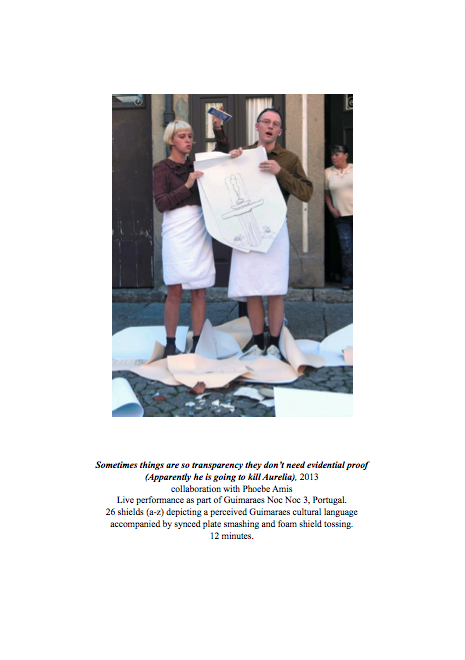Over the last three months, things have been tricky. CCA Glasgow, where I have been based since May, has been closed due to the fire at the Glasgow School of Art. Being a fly-on-the-wall observer hassn’t been quite as effective when there’s no walls to pitch up on. My view has been limited to being cc’d into emails. A lot of my time has been spent working towards the show at Travelling Gallery, Black Box Take Stock, which is now touring Scotland! I’ve also managed to spend significantly more time than I’d imagined wading through digital material from old hard-drives, cloud-drives, dropboxes, youtube accounts, blogs, USB Sticks, and old phones, towards developing an accessible archive of my work to date. It’s been really satisfying to find things buried in sub-folders, and equally frustrating when I’ve recalled a higher-quality format of something, and can’t find it anywhere.
Through trying to find things, it’s been really interesting to recognise a logic to how material has been organised. Decisions have been fuelled by how I’ve used documentation in the past, the fluctuating value for individual works, and the speed at which I want the various technologies, which have doubled as storage devices, to operate. The easiest way to spot how a logic has developed, is through the recurring styles to folders that have appeared:
- ‘Proposal Toolkit’ – This is a practical folder that is usually the first attempt at organising, before it becomes unsustainable with the amount of material. In the past, this folder hoped to gather all the necessary components for writing applications in haste. It sub-divides into Folio (unstandardised jpegs and pdfs or previous work), Captions (writing about the folio), Artist Statement (this has been really cringe to look back over), CV (self-explanatory), and Unrealised Projects (previous ideas and proposals that weren’t accepted). Proposal Toolkits, although tempting in their promise of quicker application writing, are difficult to maintain over time. The updating of these bins can be difficult to prioritise in the middle of projects.
- ‘Gordon Douglas – VACMA Application’ – These are byproducts of the application process which have miniature folios, cover letters, CVs, etc grouped by the specific opportunity they were applying to. These can be useful as the images of the folio are all compressed to fit within emails, and are typically arrangements of works that are consistent with one another. The CV and Cover Letter are also usually tailored to suit a particular kind of opportunity (curatorial, performance etc), and can be mined for appropriate phrasing.
- ‘TO SORT – 20 June 18’ – This folder is an organisation of time, and usually has been the result of a desktop becoming overcrowded with large files and slowing the computer down. A quick fix to this has been to put everything into a folder, TO SORT (followed by the date of filing). The hope, and logic to this, is that this mess will be sorted in the future, kind of like drawers that we pile things into as a temporary measure if we have guests coming round. The reality is that there is an existing ‘Russian doll’ effect– a succession of TO SORT folders sitting within one another going back to 2016. These are, despite their appearance, very navigable as they capture a specific moment and key concerns at that time. For example, a still image from South Park shares a ‘present’ with a pdf of Lee Edelman’s No Future. The result is a series of research mood-boards of varying digital content, that are semi-accessible through memory association.
This clear entropy from practical to intuitive, is apparent through all the devices. Although a lot of accessing is privileged to my subjective experience of seeing first-hand this entropy, a great deal of the day-to-day navigation requires a knowledge of key words and the ability to search for them in ‘All Files’. The most ‘found’ documents are long, scrolling .rtf(Rich Text Format)s, typically named yesssss.rtf, or hiyaaa.rtf. These include multiple drafts applications, excluded and unfinished content, and extended caption material for specific projects. It’s not obvious if the writing in these documents is arranged in a particular order, as content is copied, pasted and edited in a perpetual update. Following the logic of the many variations of CV – Gordon Douglas copy copy copy… (where the amount of ‘copy’s signifies the more recent a document is), we can deduce that yess.rtf is older than yesssss.rtf.
These documents are frequently discovered by the search tool, but images are less easy to find. Most images bear a trace of being used in an application within their name, i.e. the prefix ‘2.’ to signify it’s position as second in a folio of submitted visual material. The searching for numbers isn’t very effective though, and most images can be found by looking in the various Application folders. Before I submitted individual jpegs, I would put together pdf folders which married images with their accompanying captions and these have been much more simple to find.
In advance of meeting Ben about website design, I thought it was important to archive my varying attempts and styles of folio. Given that previous conversations about the brief for the website have involved deconstructing the conventions of the portfolio website.

